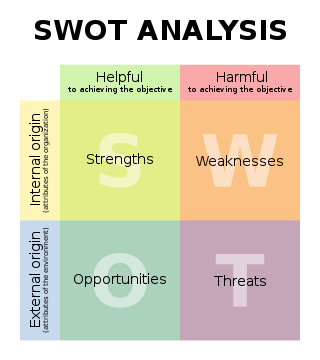SWOT Analysis - An Elixir to Professional Life
Wondering sometimes in the times of difficulty the thought that crosses everyone's mind at least once "What am I doing? What my life should be? What do I want? What is the purpose of my life?" are the most important and basic questions asked and if answered, make one above all.
Knowing ourselves, knowing our self worth are the keys to find the answers to these questions. You know, in science "To find the result you have to observe and to observe you have to perform". So there are many experimental methods that can be performed, one of them and my recommendation is SWOT analysis.
What is SWOT Analysis?
SWOT analysis (or SWOT matrix) is a strategic planning technique used to help a person or organization identify Strengths, Weaknesses, Opportunities, and Threats related to business competition or project planning.
That's just the scientific definition for an organisation to run it's business but this analysis can be used for an individual to know himself also. One's business can also be helped using this.
It is intended to specify the objectives of the business venture or project and identify the internal and external factors that are favorable and unfavorable to achieving those objectives. Users of a SWOT analysis often ask and answer questions to generate meaningful information for each category to make the tool useful and identify their competitive advantage. SWOT has been described as the tried-and-true tool of strategic analysis.
Strengths and weakness are frequently internally-related, while opportunities and threats commonly focus on the external environment. The name is an initialism for the four parameters the technique examines:
- Strengths: characteristics of the business or project that give it an advantage over others.
- Weaknesses: characteristics of the business that place the business or project at a disadvantage relative to others.
- Opportunities: elements in the environment that the business or project could exploit to its advantage.
- Threats: elements in the environment that could cause trouble for the business or project.

The degree to which the internal environment of the firm matches with the external environment is expressed by the concept of strategic fit. Identification of SWOTs is important because they can inform later steps in planning to achieve the objective. First, you should consider whether the objective is attainable, given the SWOTs. If the objective is not attainable, they must select a different objective and repeat the process. But here the objective will be attainable.
- Strengths are made sharp.
- Weaknesses are overcome.
- Opportunities are taken from environment for personal development.
- Threats are dealed with wiseness.
Have a paper and print this:

Ponder over the things and take as much time as you want but make it complete work done.
Now you know what to do....